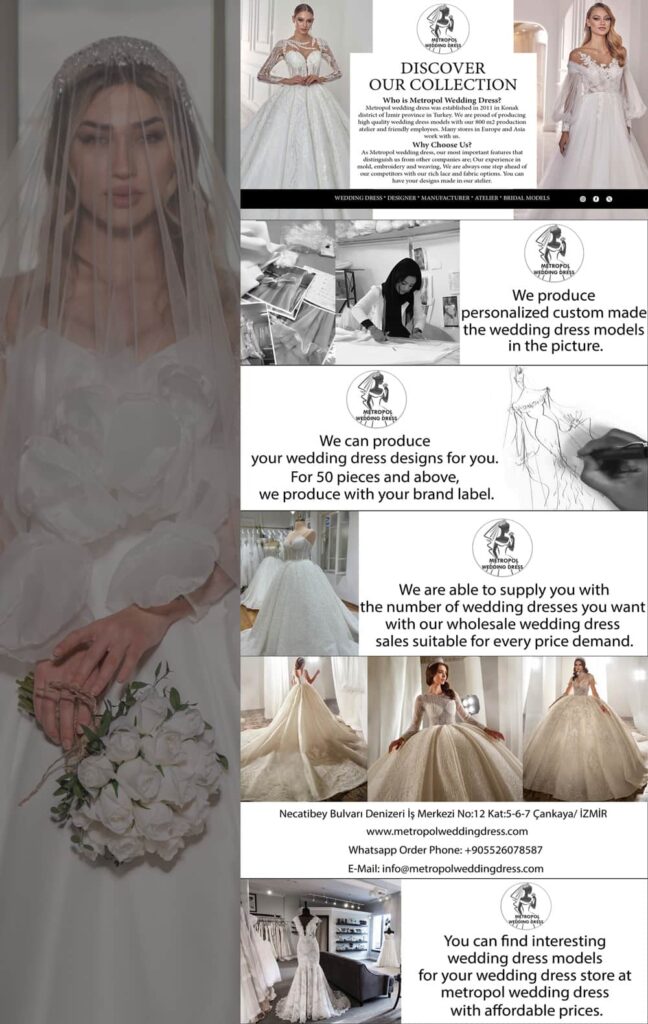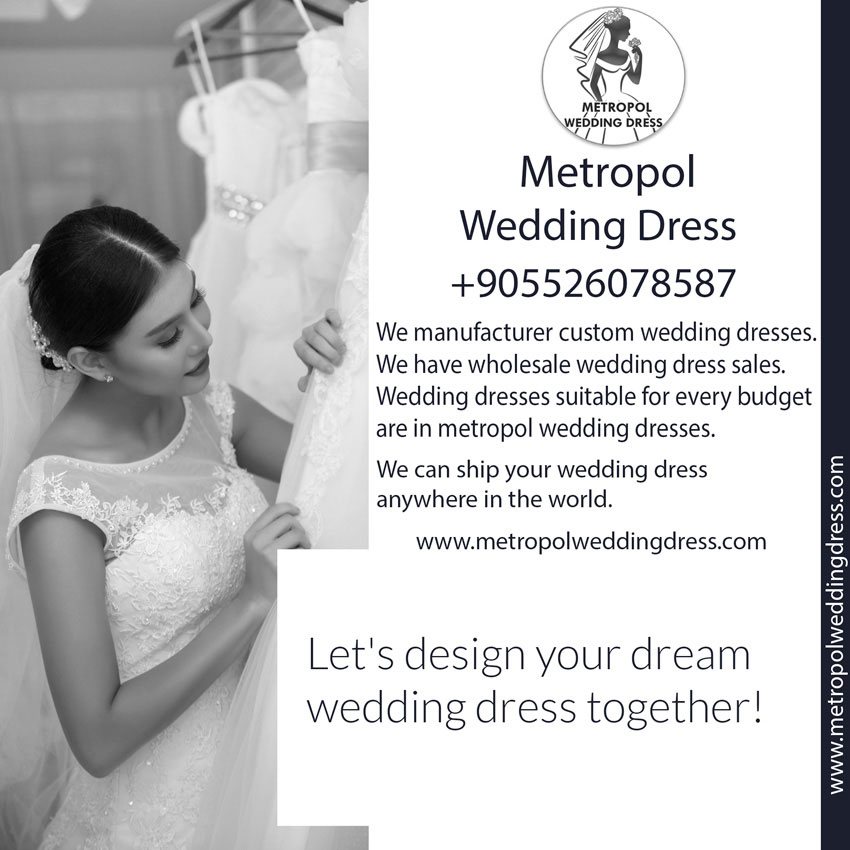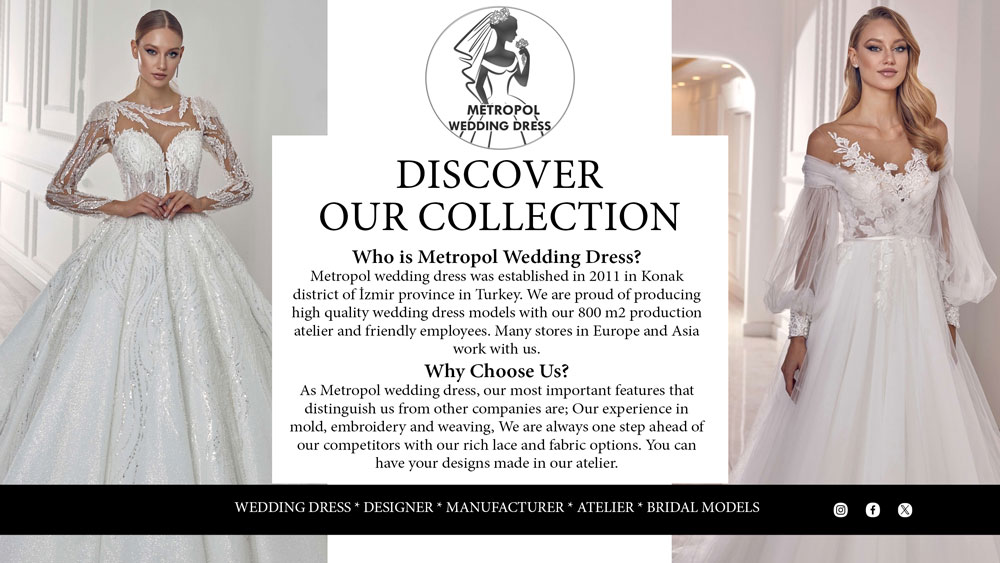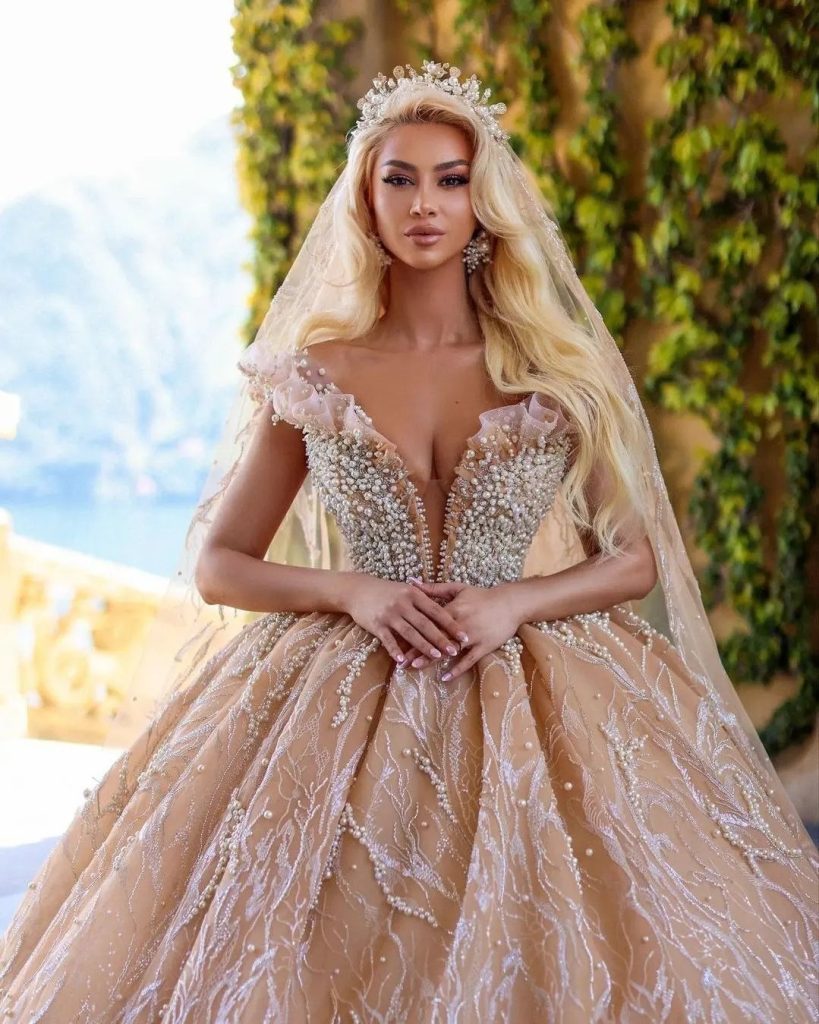
Hijab Wedding Dress Collections The world of bridal fashion is as diverse as the cultures it represents, and hijab wedding dress collections have emerged as a vibrant and essential part of this landscape. These dresses, designed to align with the principles of modesty while exuding elegance, cater to brides who wish to honor their faith and personal style on their special day. The hijab, a headscarf worn by many Muslim women, is not just a symbol of modesty but also a canvas for creativity, blending seamlessly with intricate gowns, delicate veils, and luxurious fabrics. Over the past decade, the demand for hijab wedding dresses has surged, driven by the global rise of modest fashion and the increasing visibility of designers catering to this niche. This article delves into the world of hijab wedding dress collections, exploring their cultural significance, design trends, fabric choices, and the designers shaping this dynamic industry. From traditional silhouettes to contemporary couture, we celebrate the artistry and diversity of modest bridal fashion.
The appeal of hijab wedding dresses lies in their ability to balance tradition and modernity. Brides today seek gowns that reflect their identity while embracing global fashion trends. Whether it’s a flowing A-line dress adorned with intricate embroidery or a structured ball gown paired with a statement hijab, these collections offer endless possibilities. The rise of social media platforms like Instagram and Pinterest has further fueled this trend, with brides sharing their looks and inspiring others worldwide. As the modest fashion industry continues to grow, hijab wedding dresses are no longer confined to specific regions or communities—they are a global phenomenon, celebrated for their beauty and inclusivity.
Cultural Significance of Hijab in Bridal Fashion
The hijab holds profound cultural and spiritual significance in many communities, particularly within Islam, where it represents modesty, dignity, and devotion. In the context of weddings, the hijab takes on additional layers of meaning, symbolizing a bride’s commitment to her faith and her role as a partner. For Muslim brides, the wedding day is a sacred occasion, and the choice of a hijab wedding dress reflects a desire to honor religious values while celebrating personal style. However, the concept of modesty in bridal fashion extends beyond Islam. Christian, Jewish, and other faith-based communities also embrace modest wedding attire, highlighting the universal appeal of covered designs.
In different regions, the hijab’s role in weddings varies, shaped by cultural traditions and local aesthetics. In the Middle East, brides often pair their hijabs with opulent gowns featuring gold embroidery and Swarovski crystals, reflecting a love for grandeur. In South Asia, hijab-wearing brides may opt for heavily embellished lehengas or shararas, with dupattas styled as headscarves. In Western countries, where multicultural weddings are common, brides blend modest designs with contemporary trends, such as minimalist gowns with long sleeves and sleek hijabs. These regional variations underscore the versatility of hijab wedding dresses, which can be tailored to suit diverse tastes and traditions.
The hijab also serves as a focal point of the bridal look, often adorned with lace, pearls, or floral accents to complement the dress. For many brides, choosing the perfect hijab is as important as selecting the gown itself. It is a deeply personal decision, reflecting not only religious beliefs but also family heritage and individual personality. As one hypothetical bride, Aisha, shares, “My hijab was my crown on my wedding day. I wanted it to be elegant yet simple, so it wouldn’t overshadow my dress but would still feel like me.” Such sentiments highlight the emotional weight of the hijab in bridal fashion.
Evolution of Hijab Wedding Dress Designs
The evolution of hijab wedding dresses mirrors the broader transformation of the modest fashion industry. Decades ago, modest bridal wear was often limited to simple, unembellished gowns or traditional outfits adapted to meet modesty requirements. Brides had to rely on custom tailors to create dresses that aligned with their values, as mainstream bridal fashion rarely catered to covered styles. However, the rise of globalization and the internet has revolutionized this landscape, giving designers a platform to showcase innovative hijab wedding dress collections.
In the early 2000s, designers like Anniesa Hasibuan and Dian Pelangi began to gain international recognition for their modest fashion lines, including bridal wear. Their work challenged stereotypes, proving that modesty and high fashion could coexist. Hasibuan’s 2016 New York Fashion Week show, featuring hijab-wearing models in luxurious gowns, was a turning point, inspiring a new generation of designers. Today, hijab wedding dresses are as varied as their mainstream counterparts, with silhouettes ranging from romantic ball gowns to sleek, modern designs.
The influence of global fashion trends is evident in contemporary hijab bridal collections. Designers draw inspiration from couture houses, incorporating elements like dramatic trains, asymmetrical cuts, and bold color palettes. At the same time, they remain committed to modesty, ensuring that dresses feature long sleeves, high necklines, and full coverage. The result is a harmonious blend of tradition and innovation, appealing to brides who want to stand out without compromising their value
Muslim bride With Hijab
A Muslim bride wearing a hijab typically incorporates the headscarf into her wedding attire in a way that aligns with cultural, religious, and personal style preferences. The hijab can be styled elegantly, often adorned with intricate embroidery, lace, or embellishments like pearls, sequins, or floral accents to complement the bridal outfit. Common bridal outfits include lehenga choli, sharara, anarkali suits, or abayas in countries like Pakistan, India, or the Middle East, usually in colors like ivory, gold, red, or pastel shades. The hijab may be draped to cover the hair and neck modestly, sometimes paired with a dupatta or a long veil for added grace. Jewelry such as jhumkas, maang tikka (forehead ornament), or statement necklaces often enhances the look, while makeup is typically glamorous yet balanced to maintain modesty.
Hijab Wedding Dress Collections
Muslim bridal photography has evolved into a captivating art form, blending deep-rooted traditions with modern aesthetics. A Muslim bride’s wedding day is not only a celebration of love but also a reflection of cultural identity, modesty, and spiritual significance. Capturing these precious moments through photos has become an essential part of the modern Muslim wedding.
Traditional Attire and Modesty
One of the most distinctive features of Muslim bride photos is the attire. Brides often wear intricately embroidered dresses, such as abayas, kaftans, or specially tailored modest gowns. The hijab or headscarf is commonly styled to complement the dress, and in many cases, adorned with crystals, lace, or custom veils. Some brides opt for the traditional white gown, while others choose rich, vibrant colors like maroon, emerald green, or gold, often representing cultural heritage.
Modesty is central in Muslim bridal fashion, but that doesn’t limit beauty or style. On the contrary, many brides work with designers who specialize in modest fashion to create one-of-a-kind looks that are both elegant and respectful of Islamic values.
Cultural Influences and Diversity
Muslim weddings are incredibly diverse, with customs and traditions varying from country to country. From Turkish and Moroccan influences to South Asian and Middle Eastern styles, each bride brings her own cultural touch to the photos. Henna-adorned hands, traditional jewelry, and symbolic rituals such as the nikah ceremony are often captured to highlight the richness of Islamic heritage.
In some cases, brides also take pre-wedding portraits in cultural attire from both the bride and groom’s backgrounds, showcasing unity and respect for their blended traditions.
Artistic and Emotional Expression
Modern Muslim bridal photography often blends traditional poses with creative elements. Photographers use natural lighting, luxurious settings, and intimate framing to highlight the bride’s grace and emotions. Whether it’s a serene moment of prayer, a candid laugh with her sisters, or a powerful gaze beneath a jeweled veil, each image tells a story.
Muslim brides frequently have solo shoots as well as portraits with family, friends, and, after the nikah, their spouse. These photo sessions are more than documentation—they are works of art that reflect the spirituality and emotion of the day.
Privacy and Female Photographers
Another unique aspect of Muslim bridal photography is the emphasis on privacy. Some brides prefer female-only events and choose female photographers to ensure comfort and religious observance. This growing demand has led to the rise of many talented female photographers specializing in hijabi and modest bridal shoots.
Conclusion
Muslim bride photos are a powerful fusion of tradition, beauty, and spirituality. Every image captures not just a bride on her special day, but a story of love, identity, and devotion. As the world of wedding photography continues to evolve, Muslim bridal portraits remain timeless, rooted in values while embracing contemporary creativity.
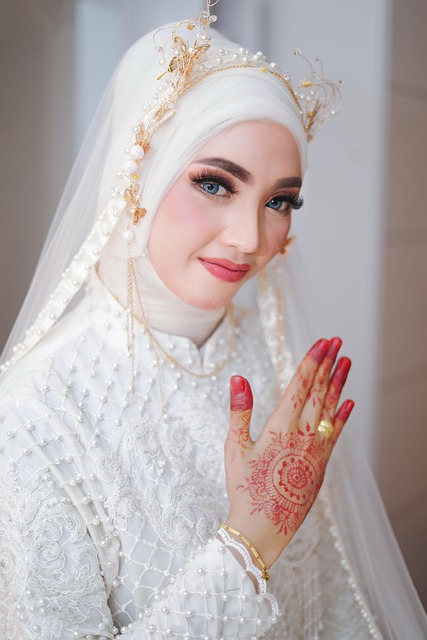
Muslim Bride Dress
Marriage is one of the most sacred and celebrated events in a Muslim woman’s life. It is not only a union between two individuals but also a merging of families, cultures, and spiritual paths. A bride’s dress plays a vital role in this ceremony, representing purity, faith, and cultural identity. In recent years, the Muslim bridal fashion industry has blossomed into a dynamic space where tradition beautifully intertwines with modern elegance. This article explores the evolution, styles, cultural influences, and contemporary trends of Muslim bride dresses around the world.
2. Historical Background Muslim bridal attire has been influenced by centuries of rich cultural traditions and regional variations. During the Ottoman era, for instance, brides wore intricately embroidered kaftans and heavy jewelry, signifying their family’s status. In South Asia, Muslim brides favored vibrant lehengas or shararas with ornate embellishments, reflecting Mughal influences. In North Africa, traditional garments like the “takchita” or “djellaba” were adorned with gold thread and elaborate patterns. These historic garments were not only beautiful but also adhered to Islamic principles of modesty.
Over time, these styles evolved, absorbing elements from neighboring cultures while maintaining the essence of Islamic modesty. Color choices, fabric types, and silhouettes changed, but the core values of covering the body and portraying grace and dignity remained consistent.
3. Key Features of Muslim Bride Dresses One of the most defining aspects of a Muslim bride dress is its adherence to the concept of modesty, or “haya.” This means that the dress typically covers the arms, legs, and often the hair, while still exuding beauty and elegance.
- Modest Coverage: Muslim bridal gowns usually feature long sleeves, high necklines, and full-length skirts. Some brides also wear a matching hijab or headscarf, seamlessly integrated into the overall look.
- Luxurious Fabrics: Designers often use satin, silk, lace, chiffon, and tulle to create flowing and graceful silhouettes. Embroidery, beading, and sequins add a touch of opulence without compromising modesty.
- Color Palette: While white remains a popular choice, especially in Western-influenced cultures, many Muslim brides choose colors like ivory, blush, gold, emerald green, or even deep red, depending on regional customs.
- Accessories: Bridal veils, statement jewelry, gloves, belts, and tiaras are often used to enhance the look. In some cultures, henna (mehndi) is applied to the bride’s hands and feet as part of pre-wedding rituals.
4. Regional Styles and Inspirations Muslim bridal fashion is incredibly diverse, reflecting the variety of cultures within the Islamic world.
- Turkey: Turkish brides often wear dresses that blend traditional Ottoman elements with modern couture. Lace, beadwork, and structured silhouettes are common. Many brides opt for a matching hijab and an elegant train.
- Middle East: In countries like Saudi Arabia, UAE, and Qatar, abaya-inspired gowns with luxurious fabrics and detailed embroidery dominate. High-end designers often cater to this region, emphasizing glamour and sophistication.
- South Asia: Pakistani and Indian Muslim brides prefer traditional lehengas, ghararas, or long flowing gowns known as “maxi dresses.” Rich fabrics, heavy embroidery, and bold colors like maroon and gold are widely used.
- North Africa: Moroccan and Algerian brides often wear traditional “kaftans” or “takchitas” with multiple layers and rich embellishments. Gold accents and headpieces known as “sherbat” or “crown veils” are popular.
- Southeast Asia: In countries like Indonesia and Malaysia, Muslim brides often wear kebaya-inspired dresses or traditional batik prints, paired with beautifully styled hijabs and delicate veils.
5. Modern Interpretations and Trends The Muslim bridal fashion industry has embraced a wave of innovation, driven by the global modest fashion movement and the rise of social media. Modern Muslim brides now have access to a vast array of styles that allow them to honor tradition while expressing individuality.
- Minimalist Chic: Simple silhouettes, clean lines, and subtle embroidery are gaining popularity. These dresses emphasize elegance over extravagance.
- High-Fashion Influence: Muslim bridal gowns are increasingly featured on international runways and fashion weeks. Designers like Annah Hariri, Elie Saab, and Raşit Bağzıbağlı have created collections that cater to modest brides.
- Sustainable Fashion: Environmentally conscious brides are opting for eco-friendly fabrics and dresses that can be repurposed or worn again.
- Customization: Brides now seek personalized dresses that reflect their unique style, often blending cultural motifs with modern design elements.
- Hijab Styling: Hijab fashion has become an art form. Brides experiment with layered styles, veils, headpieces, and even incorporating crystals or lace into their hijabs.
6. Custom vs. Ready-Made Dresses Choosing between a custom-made and a ready-to-wear bridal dress is a crucial decision for many brides.
- Custom-Made: These dresses offer a perfect fit and complete personalization. Brides can select every detail—from fabric and cut to embroidery and accessories. However, they require more time and are often more expensive.
- Ready-Made: These are available in bridal boutiques and online platforms, offering convenience and affordability. Many ready-made options today are stylish, modest, and of high quality.
7. Muslim Bridal Dress Etiquette Muslim bridal attire is more than fashion—it carries spiritual and cultural significance.
- Religious Modesty: Even during celebrations, Islamic principles of modesty must be upheld. Brides often ensure their dresses align with these values, especially in mixed-gender events.
- Gender-Segregated Events: In women-only weddings or sections of the event, brides may choose more elaborate or less modest attire since they are among female guests only.
- Respecting Traditions: Cultural rituals and family expectations influence dress choices. It’s important for the bride to balance personal taste with respect for her heritage.
8. Tips for Choosing the Right Muslim Wedding Dresses
- Know Your Body Type: Understanding your shape helps in selecting flattering silhouettes.
- Consider the Venue and Season: Outdoor weddings might require lighter fabrics; indoor winter weddings may need heavier materials.
- Stay True to Your Beliefs: Choose a dress that makes you feel beautiful without compromising your values.
- Plan Early: Give yourself enough time for fittings, alterations, and delivery.
- Work with Trusted Designers or Boutiques: Especially for custom orders, reputation and quality are crucial.
9. Global Muslim Bridal Fashion Industry The global market for Muslim bridal fashion is thriving, thanks to a growing demand for modest and stylish wedding attire.
- Fashion Hubs: Cities like Istanbul, Dubai, Jakarta, and Kuala Lumpur are leading centers for modest bridal fashion.
- Modest Fashion Weeks: Events like Istanbul Modest Fashion Week and Dubai Modest Fashion Week showcase emerging trends and designers.
- Online Retailers: Platforms like Modanisa, Haute Hijab, Aab Collection, Verona Collection, and Inayah offer a range of bridal options to global customers.
- Social Media Influence: Instagram, Pinterest, and TikTok are shaping bridal trends, offering inspiration and easy access to designers worldwide.
10. Conclusion Muslim bride dresses are a beautiful synthesis of faith, fashion, and cultural heritage. From traditional kaftans to minimalist gowns, these dresses honor the essence of modesty while embracing contemporary style. As the industry continues to grow and evolve, Muslim brides around the world are empowered to celebrate their special day with elegance, grace, and authenticity. The journey to finding the perfect dress is more than a fashion choice—it’s a personal and spiritual expression that leaves a lasting impression.
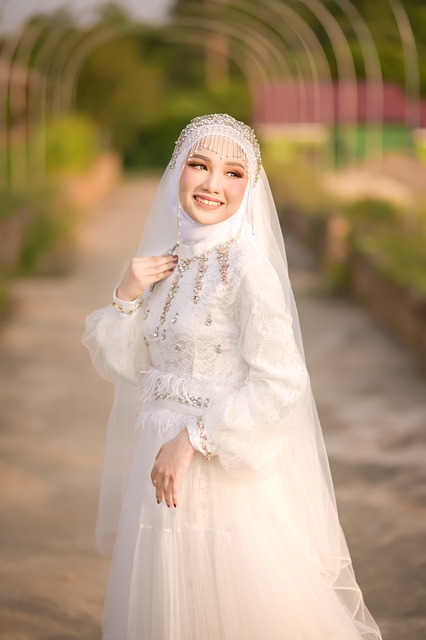
Muslim Bridal Lehenga with Hijab
In the rich tapestry of global bridal fashion, the Muslim bridal lehenga with hijab has emerged as a stunning and culturally significant ensemble that beautifully bridges the gap between tradition and modern elegance. Rooted in modesty, faith, and cultural pride, this bridal look celebrates the identity of Muslim women while allowing them to shine with regal grace on their most special day.
As Muslim brides around the world continue to redefine bridal fashion, they’re proving that modesty does not equate to compromising on beauty or glamour. The pairing of the ornate lehenga with the graceful hijab creates a harmonious balance between style and spirituality. This fusion has not only become a staple in South Asian Muslim weddings but has also captivated brides in the Middle East, North Africa, Europe, and North America.
This article delves into the significance, styling, design trends, and everything you need to know about Muslim bridal lehengas with hijab, offering inspiration and practical advice for brides-to-be looking to celebrate their faith and fashion in perfect sync.
Cultural Significance of the Bridal Lehenga
The lehenga, a three-piece ensemble comprising a flared skirt, blouse (choli), and dupatta (scarf), holds deep cultural significance in South Asian weddings. Traditionally worn by Indian brides, it has been embraced and adapted by Muslim communities across the region and beyond, resulting in breathtaking interpretations that reflect Islamic aesthetics and modesty values.
Historical Roots
Originating in ancient India, the lehenga was a royal garment, often worn by queens and princesses. With the advent of the Mughal Empire, Persian influences introduced more luxurious fabrics, intricate embroidery, and elaborate silhouettes. This fusion of styles laid the groundwork for what we now recognize as the bridal lehenga.
Adoption by Muslim Brides
In Muslim cultures, especially in Pakistan, India, and Bangladesh, the lehenga has become the preferred bridal outfit over other traditional options like the saree or sharara. Its versatility, grandeur, and ability to be customized for modesty have made it ideal for hijabi brides. By pairing it with a hijab and modifying the blouse or sleeve length, Muslim brides have created a distinctive look that honors both cultural and religious traditions.
Regional Adaptations
- Pakistan: Rich with heavy embellishments, longer kameez (tops), and intricate dupatta work.
- India: A blend of bold colors, zari, and sequin work, often with lehengas flaring out dramatically.
- Bangladesh: Elegant, more understated versions with lighter fabrics but detailed embroidery.
- Middle East: Incorporation of abaya-inspired designs, flowing layers, and lighter tones like gold and champagne.
The Role of the Hijab in Muslim Bridal Wear
The hijab, an essential symbol of modesty in Islam, plays a significant role in Muslim bridal fashion. For many brides, it is not only a religious obligation but also a part of their identity and personal expression.
Spiritual and Cultural Significance
Wearing the hijab on a wedding day symbolizes continuity of faith, even as a woman enters a new phase of life. It reflects her dedication to modesty and dignity, which are core values in Islam. The bridal hijab is often adorned with exquisite embellishments, embroidery, and delicate fabrics that enhance the overall look while maintaining its sacred purpose.
Hijab Styling for Weddings
Bridal hijab styling has evolved tremendously. Today, stylists offer countless ways to wrap and accessorize the hijab:
- Turban style: Sleek and modern, usually paired with statement earrings.
- Draped style: Flowing and romantic, often layered with the dupatta.
- Veiled hijab: Adds an ethereal, royal touch, with sheer fabrics like net or tulle.
- Embroidered hijabs: Embellished with pearls, crystals, or lace matching the lehenga.
Fashion Meets Faith
Muslim brides no longer need to choose between tradition and trend. Modern bridal hijabs are masterpieces in their own right, designed to harmonize with elaborate lehengas. The hijab elevates the look with a soft elegance that speaks volumes about inner strength and personal grace.
Design Elements of a Muslim Bridal Lehenga with Hijab
What sets a Muslim bridal lehenga with hijab apart is the seamless fusion of grandeur with modesty. Every detail—from fabric selection to embroidery placement—is curated to ensure beauty and comfort coexist.
Fabrics
- Silk: A timeless choice for luxury and sheen.
- Chiffon & Georgette: Light, airy, and perfect for layering with hijabs.
- Velvet: Ideal for winter weddings and regal aesthetics.
- Organza & Net: Adds drama and elegance, often used for dupattas and veils.
Embellishments
The magic lies in the detailing:
- Zari work: Intricate metallic thread embroidery.
- Sequins & Crystals: Often Swarovski, used for sparkle.
- Stone & beadwork: Adds richness and texture.
- Lace & Appliqué: Common on hijabs and blouse borders.
Color Palette
While red, maroon, and gold remain traditional favorites, modern brides are experimenting with:
- Blush pinks and pastels
- Emerald green and navy blue
- Ivory, champagne, and taupe
- Dual tones and ombré shades
Draping with the Hijab
The dupatta, often heavily embroidered, can be styled creatively with the hijab:
- Over the head and across the chest for full coverage
- Layered atop the hijab and pinned at the shoulders
- Draped as a second veil, trailing behind like a train
Popular Styles and Trends
Traditional Lehengas
Featuring long blouses with high necklines, full sleeves, and voluminous skirts. These are ideal for brides who prefer a classic, regal look.
Contemporary Lehengas
- Cape-style: Long sheer capes over the blouse or lehenga
- Peplum tops: Flattering and modest, often paired with slim lehengas
- Jacket lehengas: Embroidered jackets with hijabs for a modern royal feel
Hijab Styling Trends
- Crystal-embellished hijabs
- Hijab with tiaras or matha pattis
- Matching hijab and dupatta fabric
- Layered veils for princess-like appearance
Influencer & Designer Impact
Hijabi influencers like Summer Albarcha, Leena Asad, and Habiba da Silva have showcased bridal hijab looks that blend tradition with runway trends. Designers are responding with collections tailored specifically for modest brides.
Top Designers and Brands
The rise of modest fashion has prompted both mainstream and niche designers to create bridal lehengas with hijabi brides in mind.
South Asian Designers
- Sabyasachi Mukherjee: Known for regal silhouettes and detailed embroidery
- Bunto Kazmi: Celebrated for timeless Pakistani bridal pieces
- Maria B: Offers modest yet luxurious bridal collections
- Annus Abrar: Pakistani designer blending heritage with modern modesty
Modest Fashion Brands
- Modanisa (Turkey): Offers a wide range of hijab bridal styles
- Inayah (UK): Chic, understated modest wear
- Aab Collection: Elegant and contemporary modest outfits
These brands focus not only on visual appeal but also on cultural authenticity and comfort, ensuring Muslim brides feel both beautiful and respected in their attire.
Customization and Tailoring
A bridal lehenga must feel like it was made for the bride alone. Custom tailoring allows for personal adjustments that reflect the bride’s personality, body type, and modesty preferences.
Key Customization Areas
- Blouse design: Full sleeves, higher necklines, longer lengths
- Hijab matching: Fabric, color, and embellishments aligned with the lehenga
- Personal motifs: Initials, Quranic verses, or floral patterns integrated into the embroidery
Comfort and Fit
With long wedding ceremonies and photo sessions, comfort is crucial. Lightweight materials, breathable linings, and secure hijab styling help brides stay relaxed and confident throughout the day.
Accessories to Complement the Look
A Muslim bridal lehenga with hijab is incomplete without carefully selected accessories.
Jewelry
- Maang Tikka & Matha Patti: Elegant forehead pieces
- Jhoomar: Side hair ornament that sits on the hijab
- Chandbali Earrings & Kundan Sets
- Nath (Nose Ring): Optional, worn for traditional bridal charm
Hijab Accessories
- Crystal or pearl hijab pins
- Lace headbands or undercaps
- Decorative brooches for draping
Other Accessories
- Clutches & Potlis: Embellished mini bags
- Footwear: Embroidered juttis or modest heels
- Henna (Mehndi): Traditional body art on hands and feet
Shopping Tips for Muslim Brides
Where to Shop
- Online Stores: Modanisa, Studio by TCS, Libas Gallery, The Hijab Bride
- Local Boutiques: Visit designers in Lahore, Delhi, Istanbul, and Dubai
- Custom Designers: Hire tailors or designers who understand hijabi needs
Things to Consider
- Weather & Venue: Choose fabric and sleeve length accordingly
- Budget Planning: Allocate funds for outfit, hijab, tailoring, and accessories
- Fittings: Schedule multiple trials for comfort and perfect draping
Real Bride Inspirations
Aisha (UK)
Aisha wore a champagne gold lehenga with a net hijab embroidered to match her dupatta. Her look was completed with a gold matha patti and bold red lips.
Nida (Pakistan)
In a ruby red velvet lehenga with heavy dabka work, Nida paired her matching hijab with a sheer red veil and emerald jewelry.
Fatima (Nigeria)
Fatima opted for a white and gold lehenga inspired by traditional Yoruba designs. Her ivory hijab was styled with golden lace and a delicate tiara.
Conclusion
The Muslim bridal lehenga with hijab is more than just an outfit—it’s a powerful expression of faith, identity, and elegance. It allows brides to celebrate their heritage while embracing their values, proving that modest fashion can be equally dazzling and dignified.
As fashion continues to evolve, one thing remains clear: a confident, joyful bride radiating in her lehenga and hijab is a timeless vision of beauty. Whether traditional or contemporary, every element—fabric, color, accessory—comes together to tell a story of love, culture, and devotion.
To every Muslim bride preparing for her big day, remember: you deserve to feel beautiful, respected, and radiant. Let your bridal lehenga and hijab reflect not just your style, but your strength and spirit.
Muslim Bride with niqab
In the world of weddings, where fashion often reflects personal identity, culture, and emotion, the niqabi bride stands out as a symbol of devotion, modesty, and quiet elegance. For Muslim women who wear the niqab—a veil that covers the face except for the eyes—the wedding day is not just a celebration of love and unity but also a profound reflection of faith and self-expression. While some may view the niqab as limiting or conservative, for many Muslim brides it is a beautiful part of their religious and personal journey. Wearing it on their wedding day is not only a continuation of their everyday faith but also a powerful representation of spiritual commitment as they step into a new chapter of life.
The image of a niqabi bride challenges conventional norms of beauty and bridal fashion that dominate mainstream media. Instead of showcasing the face with layers of makeup or intricate hairstyles, the niqabi bride emphasizes grace through modesty, flowing fabrics, and meaningful details. The elegance lies in the simplicity, the symbolism, and the confidence of a woman who chooses to honor her beliefs even on one of the most celebrated days of her life.
In recent years, there has been a noticeable rise in the visibility of niqabi brides around the world. Social media platforms, bridal blogs, and modest fashion influencers have contributed to the growing representation and celebration of niqabi brides across diverse cultures. From traditional Middle Eastern weddings to contemporary ceremonies in Western cities, the niqab has found its place in bridal fashion in both timeless and innovative ways.
This article explores the rich meaning, regional diversity, fashion styles, and evolving perceptions surrounding Muslim brides who wear the niqab. It delves into how these women blend tradition and modernity, uphold religious values, and redefine bridal elegance—proving that modesty and beauty are not mutually exclusive but powerfully intertwined.
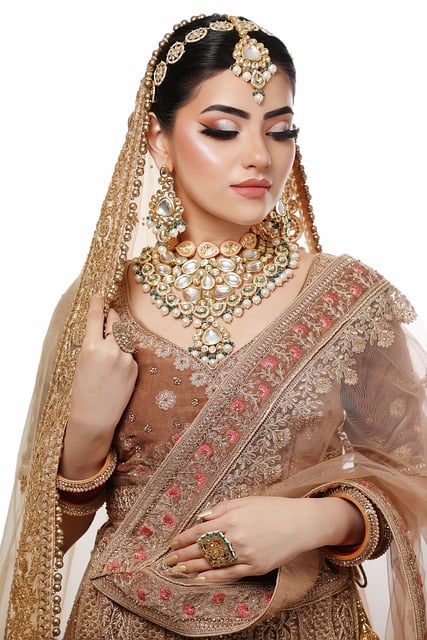
Indian Muslim bride
Bridal Attire
- Lehenga or Sharara: Often the preferred choice, heavily embroidered with zari, sequins, beads, and crystals. Popular colors include red, maroon, emerald green, navy blue, or even pastels for modern brides.
- Hijab or Dupatta Draping: Many Indian Muslim brides wear a beautifully coordinated hijab or drape their dupatta modestly over their head, often styled with accessories.
- Niqab (Optional): Some brides may choose to wear a niqab, in line with their beliefs, especially during the nikah ceremony.
- Fabrics: Luxurious silks, velvets, georgettes, and satins are commonly used.
Jewelry & Accessories
- Maang Tikka and Jhoomar (Passa): Forehead jewelry that adds a regal touch.
- Nath (Nose Ring): Often large and connected to the hair by a chain.
- Chooda and Bangles: Traditional bangles that complement the bridal lehenga.
- Kundan, Polki, or Gold Jewelry: Depending on the region and personal taste.
🌙 Wedding Rituals
- Nikah Ceremony: The Islamic marriage contract, performed by a Qazi, with the presence of witnesses.
- Mehr (Dower): A mandatory gift from the groom to the bride.
- Dua & Quran Recitations: Prayers and readings from the Quran are an integral part of the ceremony.
- Rukhsati: The bride’s farewell from her parental home, usually an emotional moment.
Makeup & Styling
- Elegant and Modest: Makeup usually focuses on enhancing natural beauty—well-defined eyes, soft lips, and a radiant glow.
- Hair Accessories or Covered Head: Hair might be elegantly tied up or covered completely, based on the bride’s preference and hijab style.
Cultural Variations
Depending on the region (Hyderabad, Lucknow, Kerala, Kashmir, etc.), styles, fabrics, and rituals may vary:
- Hyderabadi Brides: Known for khada dupattas and traditional Nizami jewelry.
- Kashmiri Brides: May wear pheran and adorn themselves with traditional headpieces like the taranga.
- Kerala Muslim Brides: Often wear gold Kasavu sarees with rich gold jewelry.
Modern Muslim Wedding Dresses
In today’s global fashion scene, modern Muslim wedding dresses are redefining bridal elegance. These gowns beautifully merge modesty with contemporary style, allowing Muslim brides to express both their cultural values and personal fashion sense. Whether adorned with intricate lace, flowing chiffon, or elegant embroidery, these dresses capture the essence of grace, femininity, and devotion.
A New Era of Modest Bridal Fashion
Modern Muslim bridal fashion has evolved beyond traditional expectations. While modesty remains the cornerstone, today’s dresses feature artistic silhouettes, delicate embellishments, and luxurious fabrics that appeal to the modern bride.
Designers from across the globe are creating halal bridal gowns that reflect Islamic values while embracing global fashion trends. From minimalist chic to bohemian elegance, brides can now choose from a wide spectrum of styles that suit their personality, body type, and wedding theme.
Key Features of Modern Muslim Wedding Dresses
- Modesty First
The hallmark of a Muslim wedding dress is its modesty. These gowns typically feature:- Long sleevesHigh necklinesFloor-length hemsCoverage for the arms and legs
- Hijab Integration
Most modern Muslim bridal looks incorporate the hijab seamlessly into the dress design. Brides often wear embellished or lace-trimmed hijabs that coordinate with the dress fabric, creating a cohesive and graceful ensemble. - Elegant Fabrics and Embellishments
Think French lace, silk satin, tulle, chiffon, and organza. Add Swarovski crystals, pearls, hand embroidery, or metallic threadwork, and the result is a gown that’s as luxurious as it is modest. - Modern Silhouettes
Muslim brides are no longer limited to A-line or ball gowns. Today’s options include:- Fit-and-flare
- Mermaid (with modest tailoring)
- Empire waist dresses
- Caped gowns and dramatic veils
Popular Colors Beyond White
While white remains a favorite, many Muslim brides opt for richer hues that reflect cultural traditions or personal preferences. Trending colors include:
- Ivory, Champagne, and Blush for a romantic Western touch
- Gold, Rose Gold, and Bronze for a regal aesthetic
- Emerald, Burgundy, and Navy for evening or winter weddings
- Soft pastels for outdoor, spring-themed weddings
Regional Influences on Modern Muslim Bridal Wear
Modern Muslim bridal fashion draws inspiration from diverse regions:
- Middle East: Lavish gowns with heavy beading, dramatic silhouettes, and long cathedral veils are common.
- South Asia: The lehenga with hijab, or modest saree, combines traditional elements with Islamic elegance.
- Southeast Asia: Countries like Indonesia and Malaysia are famous for their beautiful kebayas, lace tunics, and batik prints in bridal wear.
- Western Countries: Muslim brides in the West often go for minimalist gowns paired with statement accessories and elegant, silk hijabs.
The Role of Social Media and Muslim Influencers
Instagram and Pinterest have become powerful platforms for Muslim bridal fashion inspiration. Influencers, fashion bloggers, and real brides share their wedding looks, helping other brides discover new designers and creative styling ideas.
Some notable modest fashion influencers include:
- Sana Uqba
- Hana Tajima
- Habiba da Silva
- With Love Leena
Their content showcases how modern Muslim bridal fashion can be both trend-setting and deeply rooted in faith.
Custom vs. Ready-to-Wear Dresses
Many modern Muslim brides choose custom-made wedding gowns to ensure the perfect balance of modesty and modern style. However, the growing market of modest bridal fashion now offers stunning ready-to-wear options from leading modest fashion brands such as:
- Ashi Studio
- Barjis London
- Saiid Kobeisy
- Modanisa
- Inayah
- Anniesa Hasibuan
Styling Tips for the Modern Muslim Bride
- Choose breathable fabrics if you’re having a summer wedding, especially for outdoor ceremonies.
- Opt for lightweight layering instead of bulky fabrics to keep the look elegant.
- Coordinate the hijab or headpiece with the dress fabric for a seamless look.
- Add accessories like pearl drop earrings, a jeweled belt, or a hand-embroidered clutch for an extra touch of glamour.
- Consider cultural heritage—some brides wear a traditional gown for the religious ceremony and change into a modern gown for the reception.
Final Thoughts
Modern Muslim wedding dresses are a powerful testament to how fashion can honor tradition while celebrating individuality. Today’s Muslim brides no longer have to choose between modesty and style—they can have both, and they can have it beautifully.
Whether it’s a grand ballroom affair or an intimate garden ceremony, the modern Muslim wedding dress empowers the bride to look and feel like the queen she is—elegant, graceful, and unapologetically herself.

